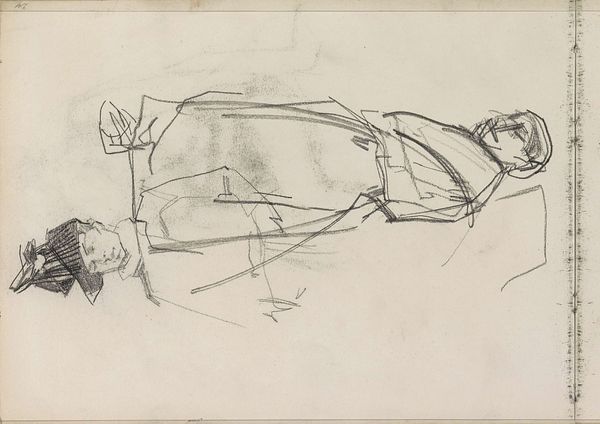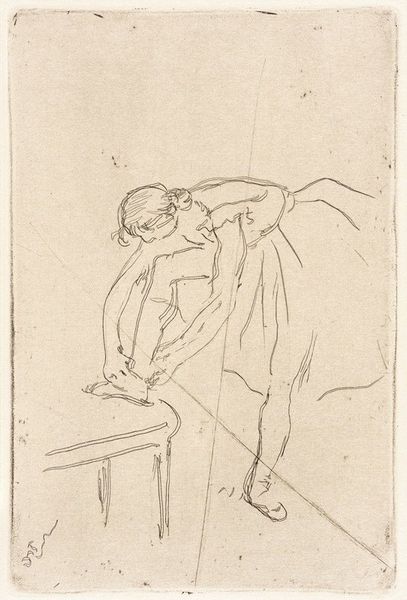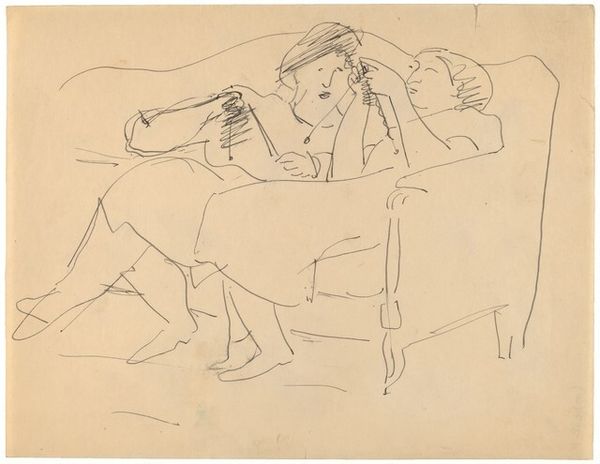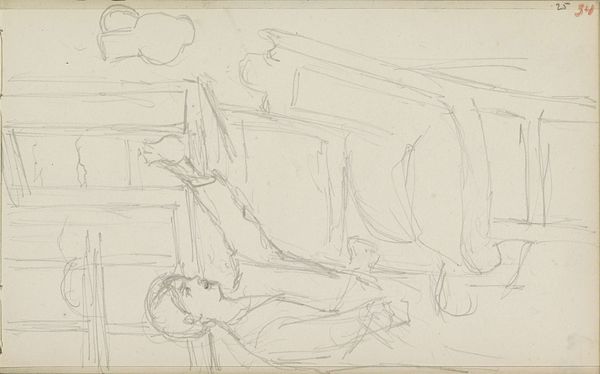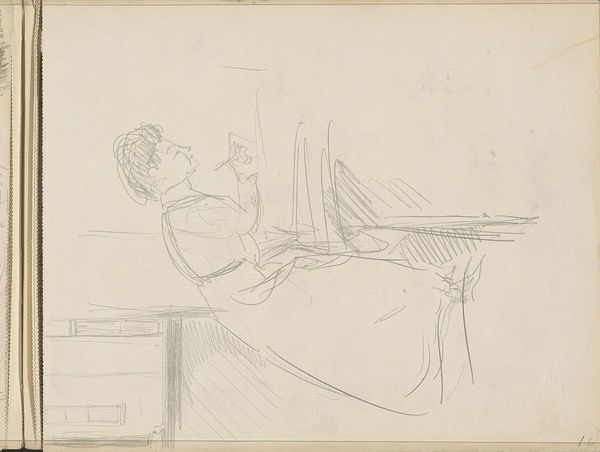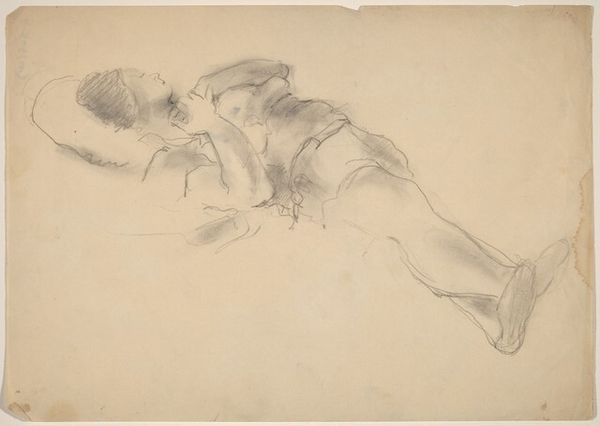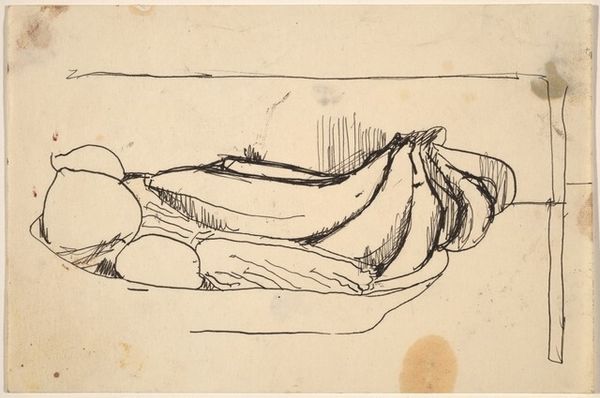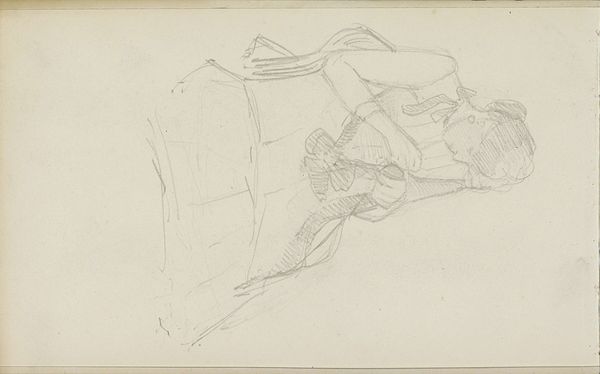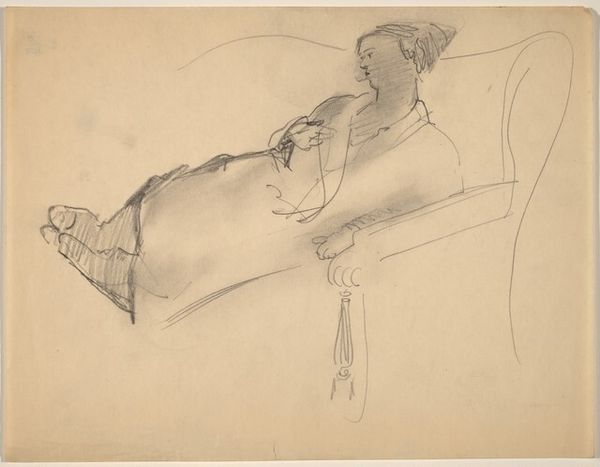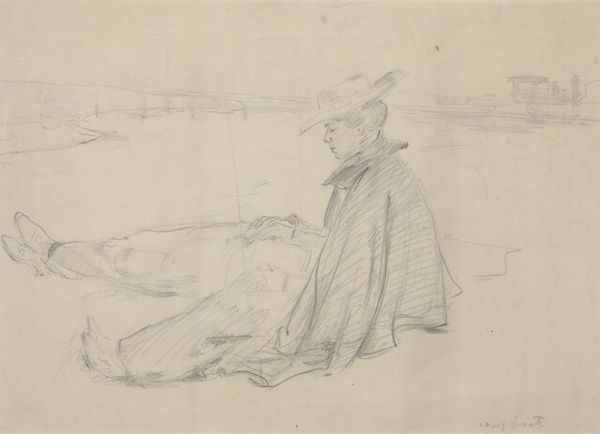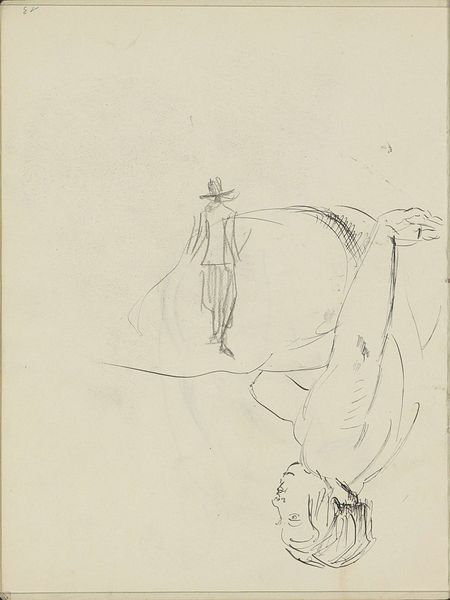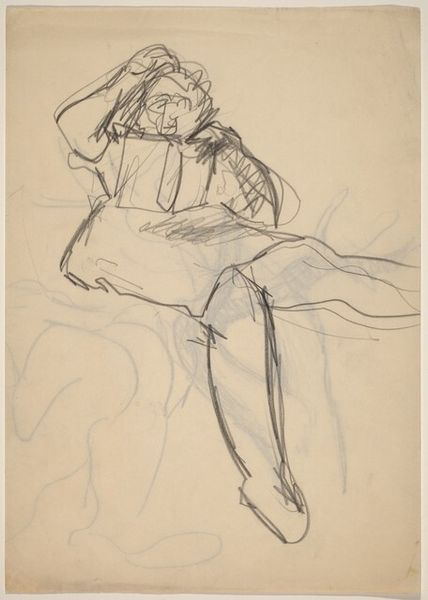
drawing, pencil
#
portrait
#
drawing
#
figuration
#
group-portraits
#
pencil
#
academic-art
Copyright: National Gallery of Art: CC0 1.0
Curator: Today, we're looking at a work entitled "Two Women Lounging on Sofa," a pencil drawing attributed to Mark Rothko. What are your initial thoughts? Editor: It feels surprisingly intimate for Rothko. The relaxed poses of the women suggest a quiet, personal moment, and the monochrome medium reinforces the feeling of everyday life being depicted, more observational than idealized. There's almost a Degas-like candidness in their postures. Curator: It’s compelling that you mention Degas, especially when considering Rothko's other work, seemingly disconnected to figuration. The women, seemingly unbothered in each other’s presence, prompts a contemplation on their relationship within their own space, reflecting notions of shared intimacy, perhaps challenging the traditional gaze typically presented in art. Editor: Exactly! How might the context of domesticity and female relationships challenge art historical tropes of female portraiture, or even intersect with burgeoning feminist perspectives during his time? Rothko’s position as a male artist is something that has been long studied by social historians. Curator: Absolutely. Examining Rothko's influences and the social climate in which he was working helps to frame his choices, particularly when it comes to these intimate sketches and figures. They seem at odds with his later commitment to abstraction. How did his political awareness feed into it all? How does it play into social narratives? The academic style, here, is juxtaposed by that domestic intimacy. Editor: These early drawings offer an important contrast, revealing a grappling with representation before abstraction consumed his artistic output. Rothko existed in social contexts filled with personal observations, from fellow artists to gallery visitors: how did their opinions on the sociopolitical landscapes feed into his practice? Curator: By studying Rothko's work through multiple perspectives - including gender and power - we can have a greater appreciation not only for the diversity that exists across the spectrum of art history, but also the important ways in which art, historical understanding, and personal experience are all so connected. Editor: Indeed. Considering it all is a constant process, the beauty is truly found in uncovering how it influences our current dialogue on these perspectives and their importance.
Comments
No comments
Be the first to comment and join the conversation on the ultimate creative platform.
